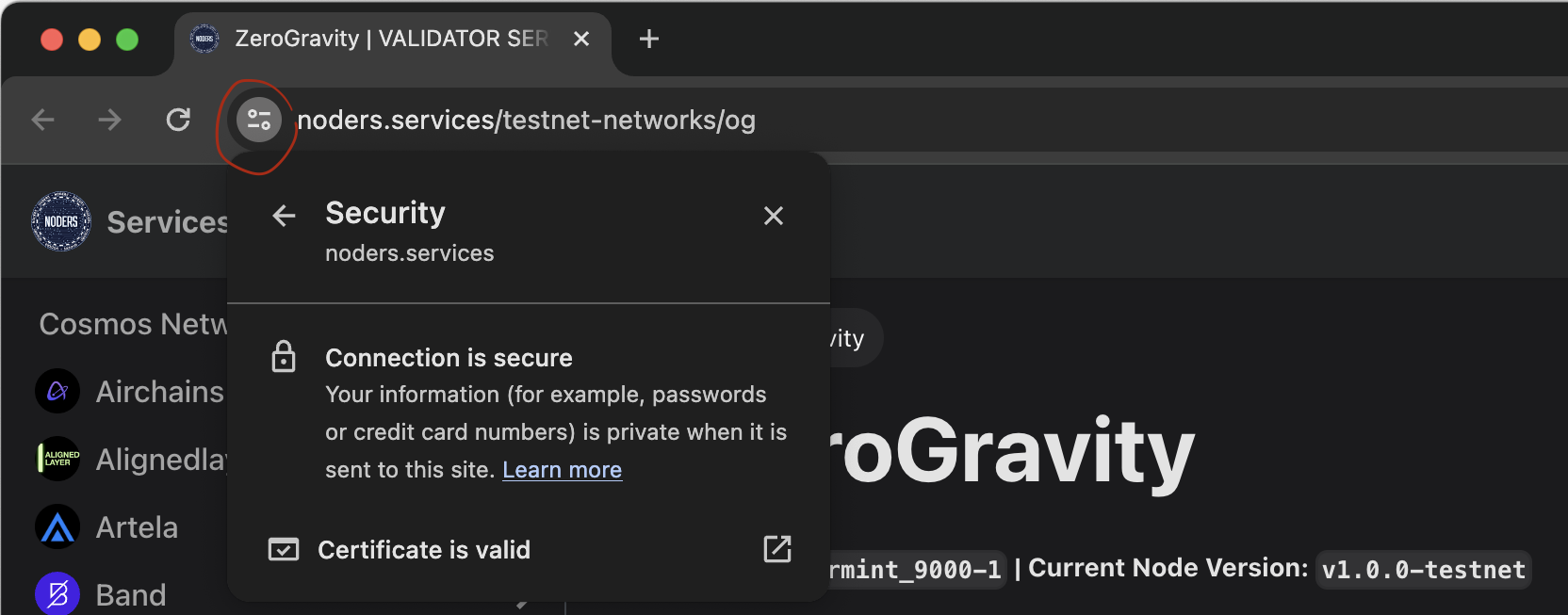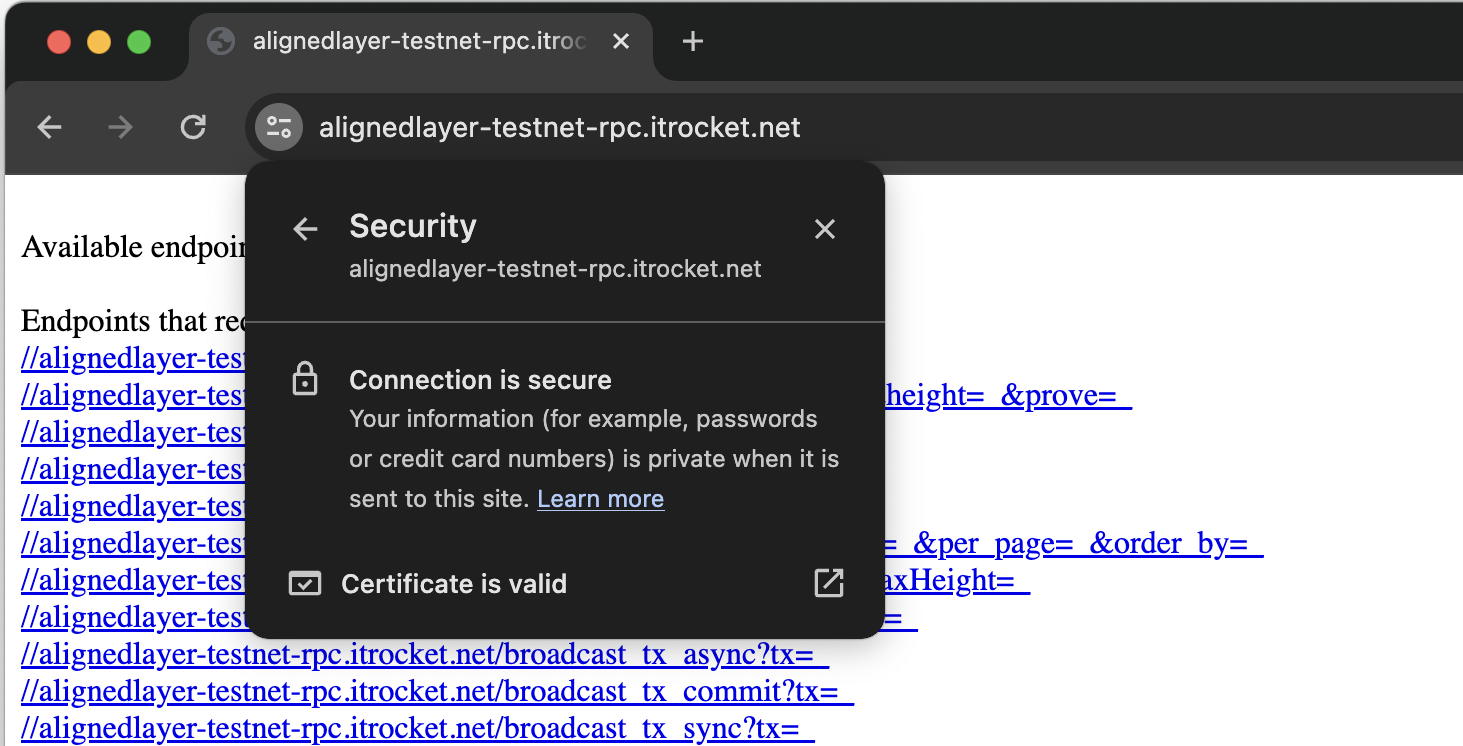Why TLS?
Context
Decentralization is one of the key concepts of WEB3. A good example of decentralization is an active set of validating nodes in Proof-of-Stake networks which usually contains 100 or more validators. Network will keep operating if one or several of them go down. Apart from that, there are many explorers which provide network information consuming data from nodes and presentng it in human readable format. Explorers also can consume data from any node of the network and switch between them in case of downtime.
In order to support decentralization many node maintainers expose public APIs and share their addresses on services websites. A couple of examples are below.
Challenges
Decentralization brings not only benefits, but also challenges:
- authenticity is required
- integrity is required
Authenticity stands for proof of identity. It means, one should be sure they are communicating with someone they want to, and not someone else.
Integrity means information remains unaltered and free from tampering.
Solution
Telecom industry faced the challenges several decades ago and, luckily, there is a solution for it. TLS protocol brings authenticity, integrity and several more benefits.
Nowadays, there are many ways to use TLS: hosting services provide this capability, also one can setup their web servers to enforce TLS.
You might notice an icon in some browsers indicating TLS is enabled. This is how
it looks in Google Chrome:

One can check the same indication for node endpoints working upon HTTP protocol,
for example, rpc endpoints:

I saw quite a good number of HTTP based endpoints of validating nodes and, good news, they all utilise TLS.
The situation is not that bright if we take a look at gRPC endpoints. To check
it, one can use a great tool, grpcurl, a curl-analog for gRPC.
% grpcurl band-grpc.noders.services:30090 list
Failed to dial target host "band-grpc.noders.services:30090": tls: first record does not look like a TLS handshake
When TLS is setup properly there is no such an error:
% grpcurl grpc.band.crptmax.com:26443 list
cosmos.auth.v1beta1.Query
cosmos.authz.v1beta1.Query
...
Let’s forbid grpcurl to use TLS (-plaintext option):
% grpcurl -plaintext band-grpc.noders.services:30090 list
cosmos.auth.v1beta1.Query
cosmos.authz.v1beta1.Query
...
It works, but there is no guarantee of authenticity, integrity or
privacy. Let’s demonstrate that simple traffic sniffing can show
the content of response (to breach authenticity or integrity is
not that simple, but possible). Run tcpdump in one terminal:
% sudo tcpdump -A -s 1000 port 30090
And query node in another:
% grpcurl -plaintext band-grpc.noders.services:30090 list
...
In the first terminal we will see:
% sudo tcpdump -A -s 1000 port 30090
tcpdump: data link type PKTAP
tcpdump: verbose output suppressed, use -v[v]... for full protocol decode
listening on pktap, link-type PKTAP (Apple DLT_PKTAP), snapshot length 1000 bytes
...
.....4Z..............)..........$..:.*2..
.
.cosmos.auth.v1beta1.Query
.
.cosmos.authz.v1beta1.Query
.
.cosmos.bank.v1beta1.Query
2
0cosmos.base.reflection.v1beta1.ReflectionService
3
...
So everyone who can sniff tcp packets can see the requests and responses. For validating node APIs is it not a big problem since they serve open information, it was just a demonstration that TLS is off.
Are you kidding me? Is it an issue?
Integrity is a way more important for validating nodes than privacy. Without it, we can’t trust any information we get from nodes, could it be your balance, active set of validating nodes or current height of the chain.
Several years ago, when HTTPS was not enforced everywhere (and thus no intergity was guaranteed), some internet service providers used to inject js code which showed ads… Yes, they modified content of web pages in order to show their advertisement. It happened here and there, check this stackoverflow thread highlighting it.

